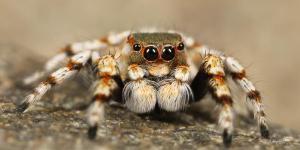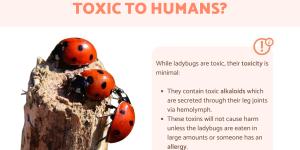Are Firebugs Harmful?


Firebugs are not poisonous and they are not known to carry any disease which is harmful to humans. Despite their alarming name, they do not pose any particular threat to our well-being. Belonging to the Pyrrhocoridae family, the firebug (Pyrrhocoris apterus) is native to Central Europe and Asia, particularly countries such as Mongolia, Siberia, India and China. Their habitat range has expanded outside of their native areas to the United States and other regions as a result of being introduced. Other members of the same insect family are known to eat crops, but even this is not a threat the firebug poses.
To learn more about the level of risk this insect causes, AnimalWised asks are firebugs harmful? We look at the physical and behavioral traits of firebugs to determine what harm they might cause to humans or ecosystems in general.
Are firebugs harmful to humans?
Firebugs are insects in the family Pyrrhocoridae. These insects are known for their red veiny colorations on their body, leading some species to be known as red bugs. Some are known to feed on crops and leave stains due to their feeding habits, but this is not the case with the firebug. Important characteristics of firebugs include:
- They measure between 6 to 12 mm in length when in their adult stage.
- There are variations in their wings with some being apterous (completely wingless), brachypterous (non-functioning wings which are reduced in size) or macropterous (fully developed wings that allow for flight). This is a form of polymorphism which allows different firebugs to focus on different behaviors more effectively.
- Its antennae are quite long, measuring half the length of the body.
- It has prominent eyes that are located on the sides of the head.
Many insects have brightly colored or ornate patterns which act as a warning for other animals. Known as aposematism, these colorations signal to other animals that they are dangerous and need to be left alone. Often this is because they are poisonous when eaten.
The firebug has brightly colored red lines on its black body which appear as if they are aposematic, but they do not exhibit trye aposematism. While they will likely be unpalatable to potential predators, they are not toxic and will not cause them harm. It is perhaps more accurate to say they carry out Batesian mimicry because they are harmless insects which mimic similarly colored insects that are harmful.
Learn more about the warning signals in nature with our guide to aposematism in animals.
Are firebugs harmful to ecosystems?
When the conditions are conducive to it, firebugs are known to carry out swarming behavior. In these cases, they can become a nuisance due to their sheer number.
Other members of the Pyrrhocoridae family are also known to swarm. They eat crops and can descend on them in large numbers. When they do so, they can damage or even decimate crop yields. Some are particularly associated with feeding on cotton. These are known as cotton stainers since they leave a stain on the plant after feeding on them.
Firebugs are not a crop pest. While they do feed on seeds, they do not feed on cotton or other crops. Even when they swarm, they are not known to have a serious impact on crop yields. On the contrary, they are important parts of ecosystems. By feeding on certain types of plant material, they contribute to its recycling. This is an important role in ecosystems as it helps them to regenerate.

What do firebugs look like?
The firebug belongs to the Heteropteran group of insects. These are invertebrates characterized by possessing piercing and sucking mouthparts. This mouthpart consists of an upper lip, a lower lip and mandibles, which have sharp tooth-like structures at the tips. They use these structures to pierce the seeds they feed on.
In this way, firebugs have a mouthpart adapted to feed on seeds and even extract plant fluids, but it does not bite humans or other animals. Its striking coloration may be associated with providing a warning to predators of its unpleasant taste, as it contains chemical compounds that give it this flavor, but it is not endowed with venom that could harm humans.
You can discover more about the anatomy of insects with our article asking do insects have blood?
What happens if you get bitten by a firebug?
Many Heteropteran species of insect can cause quite painful bites to humans, although few are known to be venomous. Despite having specialized mouthparts which can pierce the husks of seeds, firebugs are not known to bite humans. This is because they have no reason to bite us.
We have already mentioned that firebugs are known to swarm. These large aggregations of insects allow them various advantages. These include the facilitation of reproduction, avoiding predators and controlling temperature. In both adult and nymph stages, firebugs tend to stay out of direct sunlight and seek shaded areas. This is why they are often found in residences as they try to seek shelter.
Even in these large swarms, firebugs do not bite humans. They have no interest in doing so and will leave us alone if we encounter them.
Firebugs are not known to live in bodies of water, but you can learn about those that do in our article on the different types of aquatic insects.

Do firebugs release an unpleasant odor?
Despite not being known for biting people, firebugs do have a defensive mechanism to protect themselves. As with certain other members of the order Hemiptera, firebugs are able to release an unpleasant smell when they are disturbed or agitated.
The odor this insect is not as strong as those released by some similar insects such as the stink bug (Halyomorpha halys). The smell can be more intense when swarming, but it is not known to cause any significant problems. Although unpleasant, the smell is not toxic and will not cause harm to anyone.
If you do happen to encounter a cluster of firebugs inside your home, it's best to call a specialist who can handle the situation. If you only see one, use a cloth or container to capture it. Take it to an area with vegetation and release it. This way, they will not be harmed.
Learn more about the potential dangers of another insect with our article asking do dragonflies bite or sting?
If you want to read similar articles to Are Firebugs Harmful?, we recommend you visit our Facts about the animal kingdom category.
- Hickman, C., Roberts, L., & Parson A. (2000). Comprehensive principles of zoology. McGraw Hill Interamericana: Spain.
- Richardson, K. (2023). Red Firebug (Pyrrhocoris apterus).
https://extension.usu.edu/planthealth/research/red-firebug







